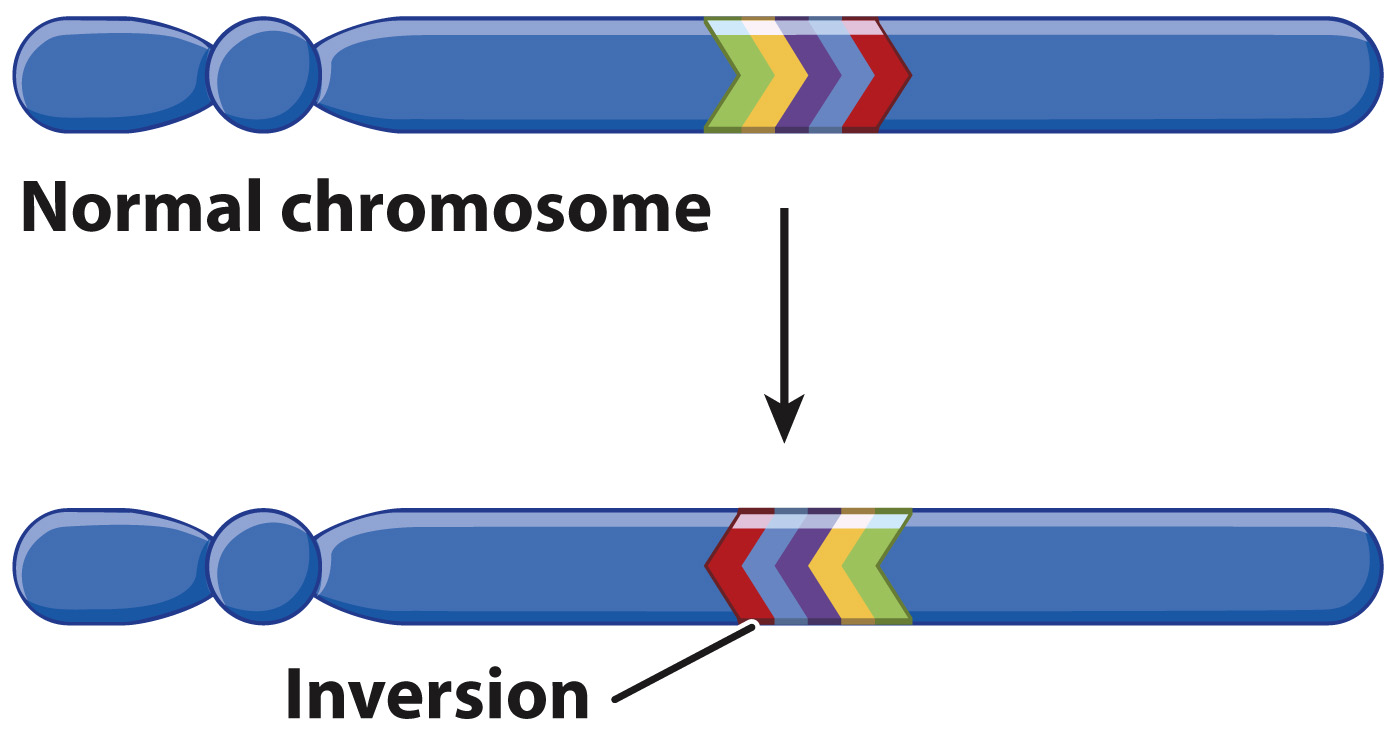An inversion has a chromosomal region reversed in orientation.

Chromosomes in which the normal order of a block of genes is reversed contain an inversion (Fig. 14.14). An inversion is typically produced when the region between two breaks in a chromosome is flipped in orientation before the breaks are repaired. Especially in large genomes, the breaks are likely to occur in noncoding DNA rather than within a gene. Whereas large inversions can cause problems in meiosis, small inversions are common in many populations and play an important role in chromosome evolution. A small inversion can have almost no effect on the organism because it still contains all of the genes present in the original chromosome, merely flipped in their order, and is too small to cause problems in meiosis. The accumulation of inversions over evolutionary time explains in part why the order of genes along a chromosome can differ even among closely related species.